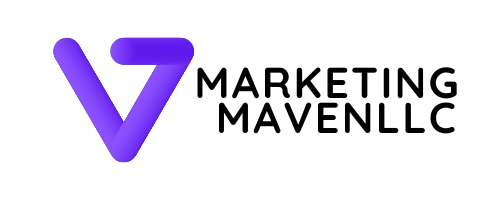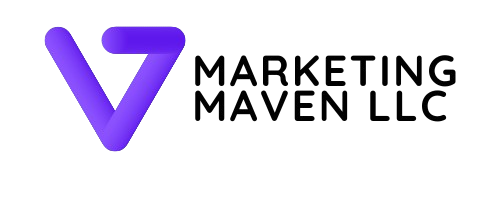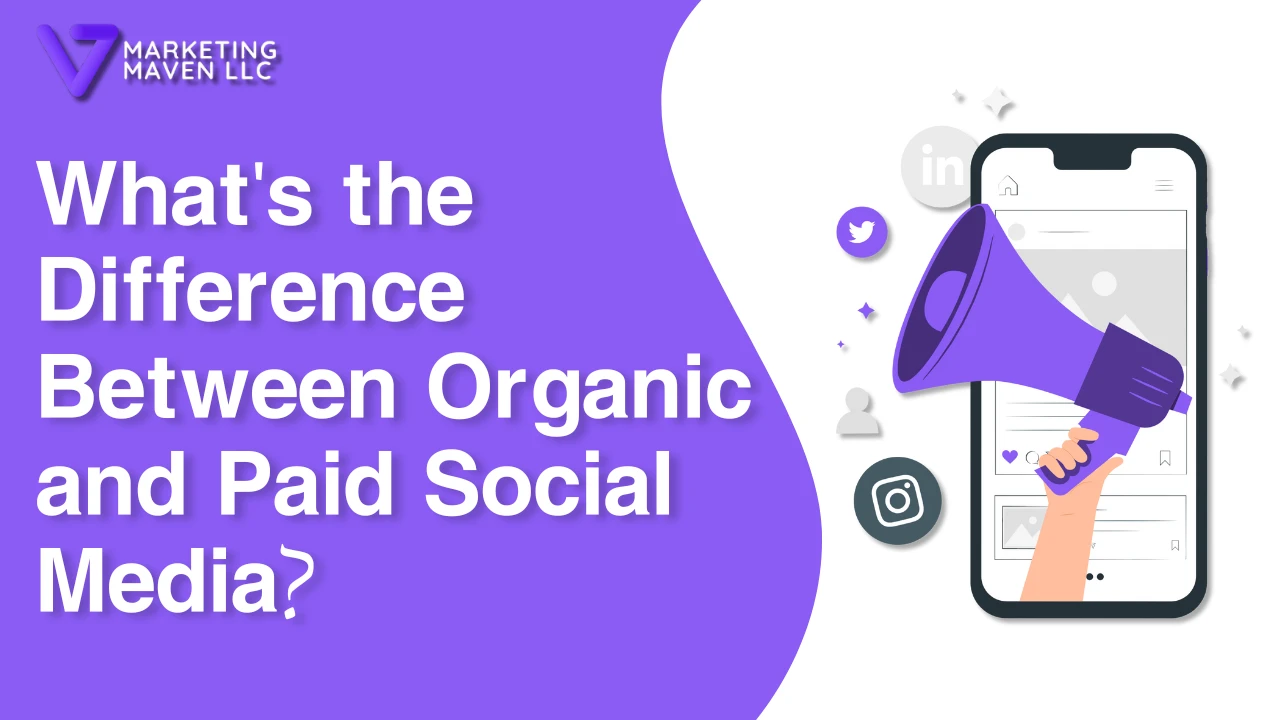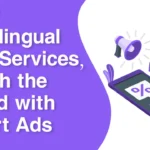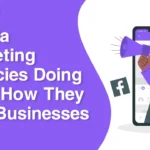Social media has evolved far beyond just a platform for sharing selfies, travel snaps, or food pictures. It has now become one of the most powerful tools to build brand identity, connect with your audience, and grow your business. Whether you’re a small startup or a big company, having a strong presence on platforms like Instagram, Facebook, LinkedIn, and TikTok is almost necessary to stay relevant and competitive.
But as you dive deeper into the world of social media marketing, you’ll come across two key approaches: organic social media and paid social media. These two terms often confuse beginners, but understanding the difference is crucial to creating a successful social media strategy. Each approach serves a different purpose and can bring unique results depending on your goals.
So, which one is better? Should you focus on growing your followers naturally, or should you pay to reach more people? Don’t worry we’re here to make things easy and explain everything in simple words, just like a friend helping you figure it out for the first time.
The Key Differences Between Organic and Paid Social Media
Let’s compare both side-by-side to understand how they’re different:
| Feature | Organic Social Media | Paid Social Media |
|---|---|---|
| Cost | Free | Paid (you set the budget) |
| Reach | Limited to followers | Larger, targeted audience |
| Speed | Takes time | Gives fast results |
| Goal | Build trust and engagement | Drive traffic, leads, or sales |
| Content | Educational, fun, brand updates | Ads, offers, campaigns |
| Analytics | Basic | Advanced insights |
| Longevity | Long-term strategy | Short-term boost |
| Targeting | Based on your following | Custom targeting options |
| Brand loyalty | Builds slowly over time | Supports brand awareness |
| Control | Less control on who sees content | Full control on audience targeting |
What is Organic Social Media?
Organic social media means sharing content on social platforms like Instagram, Facebook, LinkedIn, or Twitter without spending any money. It’s the natural way of connecting with your audience by posting photos, videos, stories, updates, or helpful tips directly from your brand’s page. You’re not running ads or boosting posts here. Instead, you’re simply putting out content that your followers can see, engage with, and share if they find it useful or interesting.
This type of content often includes regular updates about your business, behind-the-scenes moments, blog articles, or helpful tips. You also build trust by replying to comments, answering DMs, and liking or sharing your community’s posts. It’s a two-way street, where genuine interaction matters more than fancy graphics or big budgets.
When you use organic social media, your reach is usually limited to your current followers. But if your post gets good engagement like likes, shares, or comments it can also reach their friends or even people browsing by hashtag, location tags, or trends. Though the growth might be slow, it’s more meaningful, because you’re building real relationships and long-term loyalty something we always recommend at Marketing Maven.
Pros and Cons of Organic Social Media
Organic social media has its own strengths and challenges, especially when it comes to growing a brand naturally. One of the biggest advantages is that it’s completely free to use you don’t have to spend money to post content, engage with your audience, or build your online presence. It allows businesses to form real, meaningful relationships with followers over time by creating content that feels personal, relatable, and genuine. This approach is also perfect for storytelling and showing off your brand’s unique voice and personality. Whether you’re sharing behind-the-scenes moments, customer testimonials, or educational tips, organic posts help build long-term trust and community.
However, the biggest downside is that organic growth can be slow. Since your posts only reach people who follow you (or those who share your content), getting your message seen by new audiences can be tough without consistent effort. Also, without likes, shares, comments, or strong engagement, the visibility of your posts may stay limited, especially on platforms with ever-changing algorithms. That’s why many brands mix organic with paid strategies to boost their reach and that’s exactly what Marketing Maven suggests for long-term success.
Where to Find Organic Social Media Inspiration
Finding ideas for organic social media isn’t as tricky as it seems just scroll through your feed and you’ll see loads of brands sharing content. But if you want to start with a focused approach, Marketing Maven recommends a smart way to gather inspiration.
Begin by exploring platforms like Thingtesting, which showcases direct-to-consumer and e-commerce brands. It’s a great place to discover how real businesses are using organic content to engage their audience. Once you spot a few brands that match your industry, visit their social media pages to see what kind of posts they share this can spark ideas for your own content.
If your business offers software or digital services, platforms like G2 are even better. You’ll find top-rated SaaS companies with active social profiles you can learn from.
As you start following more relevant pages, social platforms like Instagram, LinkedIn, or TikTok will begin recommending similar content. That’s when the magic happens your feed becomes a constant source of inspiration, tailored just for you. All thanks to a smart start and a little help from the Marketing Maven method.
What is Paid Social Media?
Paid social media means promoting your content by paying platforms like Facebook, Instagram, TikTok, or LinkedIn to reach a larger and more targeted audience. Instead of waiting for your followers to share or like your post, you boost it using money so that it appears directly in front of people who might be interested even if they don’t follow you yet. This method is powerful for businesses that want fast visibility, more website visits, or immediate action like purchases or signups.
There are many types of paid content you can use, such as boosted posts, sponsored ads, video ads, carousel posts, and story ads. These formats are designed to grab attention and encourage clicks. One of the biggest advantages of paid social media is targeting. You can choose who sees your ad based on age, gender, location, interests, or even behaviors. This means your message only goes to people who are most likely to care about your product or service.
With tools like Meta Ads Manager, TikTok Ads, and LinkedIn Campaign Manager, running ads is easier than ever. These platforms also provide detailed analytics so you can track how well your ads perform and make changes to get better results. Whether you want to build brand awareness, drive traffic, or boost sales, paid social media helps you get there quickly and efficiently as long as you have a clear strategy and budget in place.
Pros and Cons of Paid Social Media
One of the biggest advantages of paid social media is that it delivers fast results. Unlike organic content, which takes time to gain visibility, paid ads can start reaching people as soon as your campaign goes live. This is especially useful if you’re promoting a limited-time offer, launching a new product, or trying to get quick traffic to your website.
Another major benefit is precise targeting. Platforms like Facebook, Instagram, and LinkedIn allow you to choose your audience based on age, location, interests, behaviors, and even job titles. This means your ad gets shown to exactly the type of people you want to reach, which increases your chances of getting clicks and conversions.
Paid social media also plays a key role in boosting traffic and generating leads. Since you’re putting your content in front of more people including those who don’t follow you you expand your reach and attract new potential customers. With the right message and visual content, you can drive action quickly and efficiently.
However, there are also some downsides to paid social media. The first and most obvious one is that it costs money. While you can set your own budget, the more competitive your industry is, the more you may need to spend to see real results. That’s why having a clear plan and proper targeting is essential.
Another drawback is that running successful paid campaigns requires strategy. Without understanding how ad platforms work, how to track performance, or how to test different creatives, your money can be wasted. Simply boosting random posts without planning can lead to poor performance.
Lastly, if your ad isn’t designed well or feels too pushy, it can come off as just another promotion. Users might scroll past it without paying attention. To avoid this, make your ads feel valuable, natural, and in tune with your brand’s voice.
Where to Get Ideas for Paid Social Media Content
Nowadays, you’ll see all kinds of paid social media content from obvious sponsored posts to ads that look so natural, you can’t even tell they’re paid. If you ever feel stuck or unsure how your next ad should look, don’t worry there are plenty of places to find fresh ideas.
One of the best ways to get inspired is by using Ad Libraries. These tools let you explore actual ads run by different brands, so you can see what’s working in your industry. You can filter the ads by location, audience, results, and more making it easy to discover what might work for your business too.
For example, Meta’s Ad Library is great for exploring ads on Facebook and Instagram. You can filter results by language, platform, media type (like image or video), active/inactive status, and even country. This makes it super easy to find ad examples that match your brand’s style or goals.
TikTok’s Ad Library takes things even further. It offers extra filters that let you search by industry, ad objective, and other details. You can even view specific data from ads like which ones performed well and why. For example, if an app like Bumble ran a successful campaign, you can check what made it work and apply similar strategies.
LinkedIn’s Ad Library isn’t as detailed, but it’s still a solid source of inspiration. You can search by company or industry, and then click through to view performance metrics for each ad. It’s especially useful if your business focuses on B2B or professional services.
When Should You Use Organic vs Paid?
At Marketing Maven, we believe that the smartest way to grow on social media is by combining both organic and paid strategies. Relying only on one might limit your potential, but using both together creates a balanced and powerful approach. Start with organic social media to build your foundation. Post consistently, share valuable and relatable content, and engage with your followers in a genuine way. This helps your audience connect with your brand and slowly builds trust over time. You create a community that supports you, interacts with your posts, and even shares them with others all without spending a single rupee.
Once your profile is active and your brand presence is set, it’s time to scale with paid social media. If you’re launching a new product, announcing an offer, or simply want to reach people beyond your followers, paid ads can help you do it fast. You can choose your audience by age, interests, location, or behavior and show your ads directly to the people who matter most.
By using both methods together, you cover all angles. Organic content helps build long-term loyalty and engagement, while paid ads deliver quick wins like traffic, clicks, and conversions. This combo gives you the best of both worlds strong relationships and strong results.
Which One is Right for You?
Deciding between organic and paid social media depends completely on what your business wants to achieve. If your main goal is to build brand awareness, grow a loyal following, and connect with people in a genuine way, then organic social media is the best place to start. It’s perfect for sharing behind-the-scenes moments, helpful tips, and stories that show the human side of your brand. Over time, this approach builds trust and creates a real community around your business.
But if you’re looking for quick results, like getting more clicks to your website, boosting product sales, or increasing signups for an offer or event, then paid social media is the way to go. With paid ads, you can target exactly who you want by age, interest, location, and even behavior and reach thousands of people in just a few hours. It’s ideal for fast growth, especially during product launches or seasonal campaigns.
In reality, the smartest move is to combine both. A mix of organic and paid social helps you grow steadily while also getting bursts of traffic and attention when you need it most. That’s exactly what we do at Marketing Maven. We help businesses build a strong organic presence with high-quality content, while also running strategic paid campaigns to reach bigger goals faster. This balanced strategy gives the best of both worlds long-term trust and short-term success.
Final Thoughts from Marketing Maven
In short, organic vs paid social media isn’t about choosing one over the other. Both play important roles in your online success. Organic helps you connect, while paid helps you grow faster.
If you’re just starting, go organic. And once you’re ready to scale, add some paid ads to the mix. Want help creating the perfect social strategy? Contact Marketing Maven, and we’ll craft a plan that’s right for you.
Ready to grow your brand the smart way?
Let Marketing Maven help you build a strong online presence with the perfect mix of organic and paid social media. Whether you’re starting fresh or want to level up, we’ve got the strategy to make it happen.
Contact us today and let’s take your social media game to the next level!
